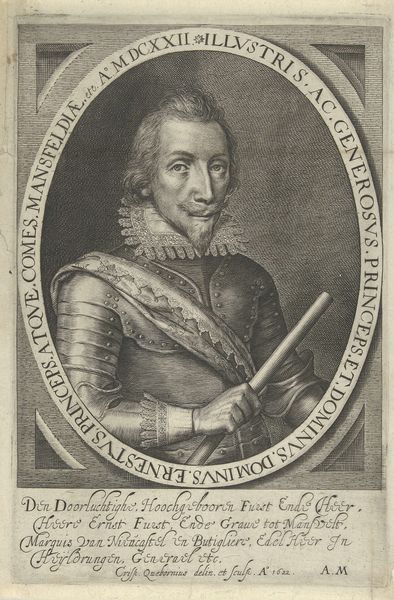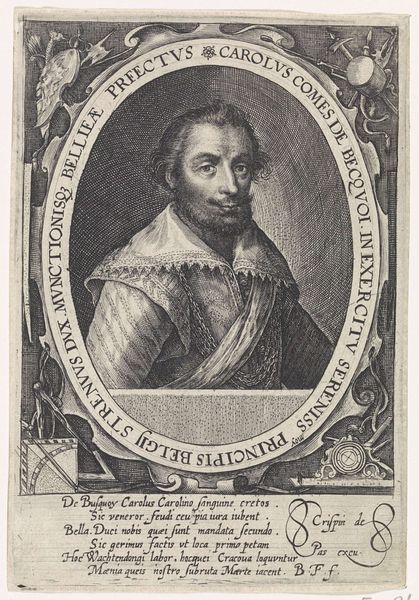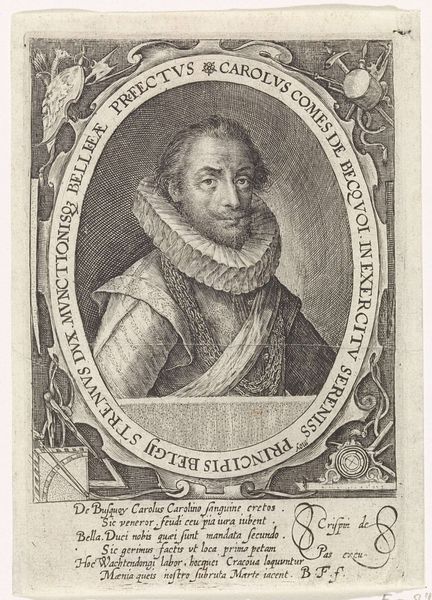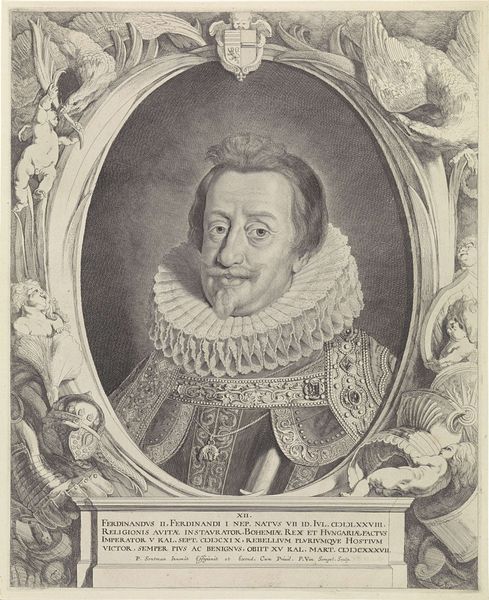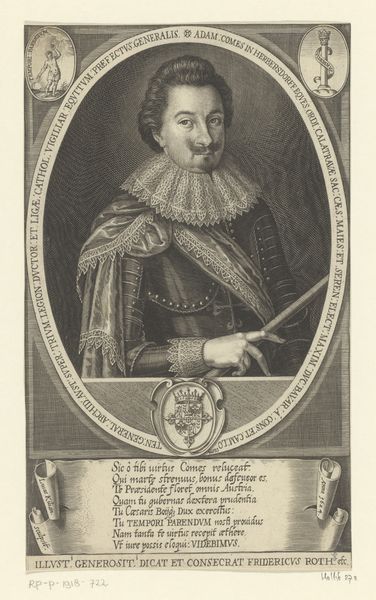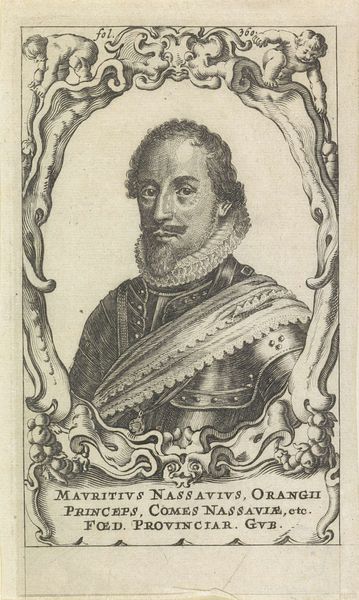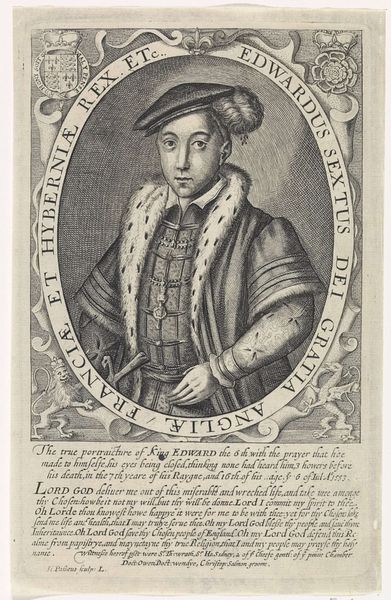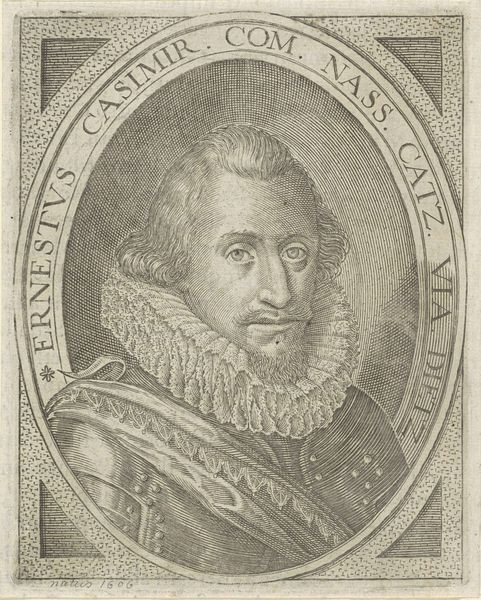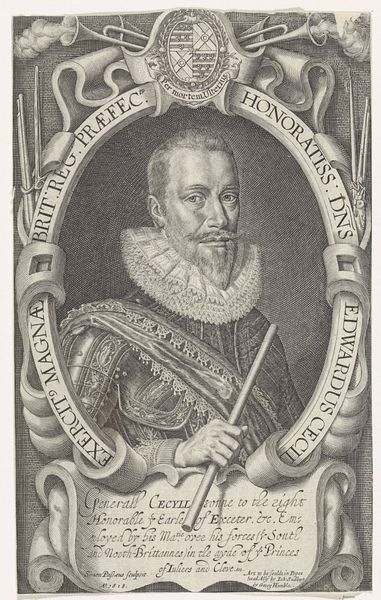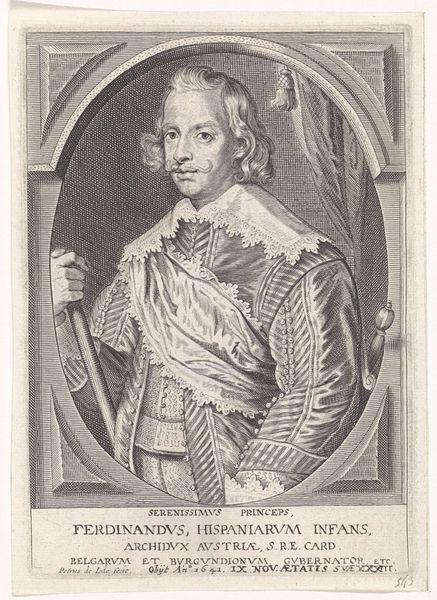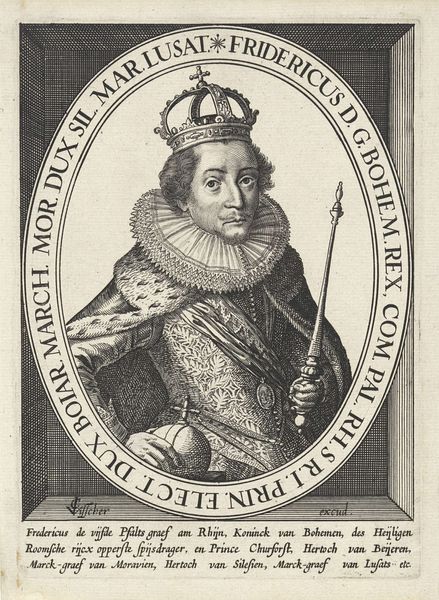
print, engraving
#
portrait
#
baroque
# print
#
old engraving style
#
engraving
Dimensions: height 168 mm, width 111 mm
Copyright: Rijks Museum: Open Domain
Curator: Here we have Simon van de Passe’s “Portrait of Charles I,” made after 1612. It's an engraving. Looking at it, what comes to mind for you? Editor: Melancholy. Something about the starkness of the line work, that intense gaze. There's a weight here, especially considering it was done when he was still quite young, before all the... unfortunate events. Curator: Indeed. The material, engraving, allowed for relatively widespread dissemination of the royal image. These prints served as potent tools for shaping public perception of the monarchy, projecting authority and… legitimacy. Think about the labor involved: the engraver meticulously transferring the likeness to a metal plate. Editor: It's fascinating to think about the layers of reproduction—the original painting (of which this is a copy) which no doubt involved the sitter and painter’s self-fashioning and promotion; the work of the engraver, then the distribution to a much wider audience via the print. Also, to create this image, the metal plate was crucial, it would have been so difficult. It looks like very hard work. Curator: Exactly, and consider the inscriptions, that elaborate oval cartouche in Latin around the figure. Each word, each title, "Prince of Wales," "Duke of Cornwall," adding to the projection of power, and future kingship, don’t forget. Van de Passe wasn’t just making a likeness; he was participating in a grand, carefully orchestrated PR campaign, in a sense. Editor: PR that met with… well, mixed results! Seeing this now, knowing how it all ended, there’s an undeniable irony, a sense of foreshadowing perhaps. The crisp, almost cold lines seem to amplify the sense of doomed grandeur. It is also kind of cold: not very personal at all. Curator: But perhaps that chilliness was part of the point, distancing the monarchy from the messy realities of everyday life, creating a figure of reverence and… fear, I’m sorry, respect! It really makes one wonder about the power dynamics inherent in the image-making of the time. What price visibility? Editor: It really shows a different dimension to how art reflects history beyond just pretty portraits, looking into power, propaganda and, indeed, doomed grandeur. Thanks. Curator: Agreed. The story is really there embedded in the material of its production.
Comments
No comments
Be the first to comment and join the conversation on the ultimate creative platform.
